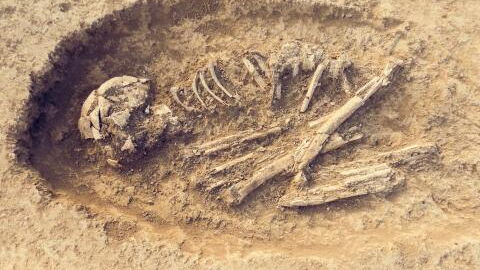It's something that has been repeated for years to millions of schoolchildren around the world. Yet, according to some, in the light of several archaeological discoveries, it deserves to be qualified. The man who discovered the Bahamas by chance on October 12, 1492, which he initially mistook for the Indies, is believed not to be the first human being to have carried out a transatlantic expedition. Archaeologists have unearthed numerous remains of infrastructure and artefacts that attest to contacts between continents long before he did.
Discover our latest podcast
African presence
According to several studies, settlement of the American continent began 15,000 years ago. The Paleoamericans, the first human populations, would have crossed Beringia (the ancient land bridge between Siberia and Alaska), before dispersing across the continent. According to José María Melgar y Serrano, who discovered the famous Olmec colossal heads, it wasn't until 1492 that these populations came into contact with travellers from other lands.
It is, without exaggeration, a magnificent sculpture, but what surprised me most was the Ethiopian type it represents. I thought there must have been black people in that country.
These Olmec heads date from at least 900 BC, and are located in the Mexican state of Tabasco. Other historical discoveries corroborate the establishment of links well before 1492. According to German toxicologist Svetlana Balabanova, traces of tobacco and cocaine - plants not found on the African continent - have been found on mummies in Egypt. These date back to around 950 BC.
Vikings in North America
For many historians, but also archaeologists, America was also explored by the Vikings, long before Columbus. The most important traces of their passage can be found at L'Anse aux Meadows, on the Canadian island of Newfoundland. In 1960, Norwegian explorer Helge Ingstad and archaeologist Anne Stine discovered the remains of an ancient Scandinavian village.
According to a study published in the scientific journal Nature, and co-authored by Professor Michael Dee, a specialist in radiocarbon dating at the University of Groningen, the site, a UNESCO World Heritage site, dates back to 1021. The remains include 3 dwellings, 1 forge and 4 workshops. This Viking presence is recounted in numerous sagas, such as that of Erik the Red written in the 13th century, mixing fiction and historical fact. Unlike Columbus, experts believe that the Viking presence at L'Anse Meadows was short-lived, lasting just twenty years.
Tony, don't some of tbe Olmec heads have appearingly different ethnicities. How can we explain this? pic.twitter.com/atX7fmLsWW
— Scott Smialkowski (@ScottSmialkowsk) November 29, 2023
Read more:
⋙ 3,000-year-old wishing well discovered in Germany reveals its precious treasures
⋙ Remarkable discovery of a 235 million-year-old dinosaur unearthed in Africa
⋙ Here are the many ways you could have died throughout history
⋙ 'History never disappears': Will King Charles grasp the importance of his visit to Kenya?
⋙ Will King Charles stop this extreme royal tradition that has a worrying impact on UK's history?
This article has been translated from Gentside FR.















